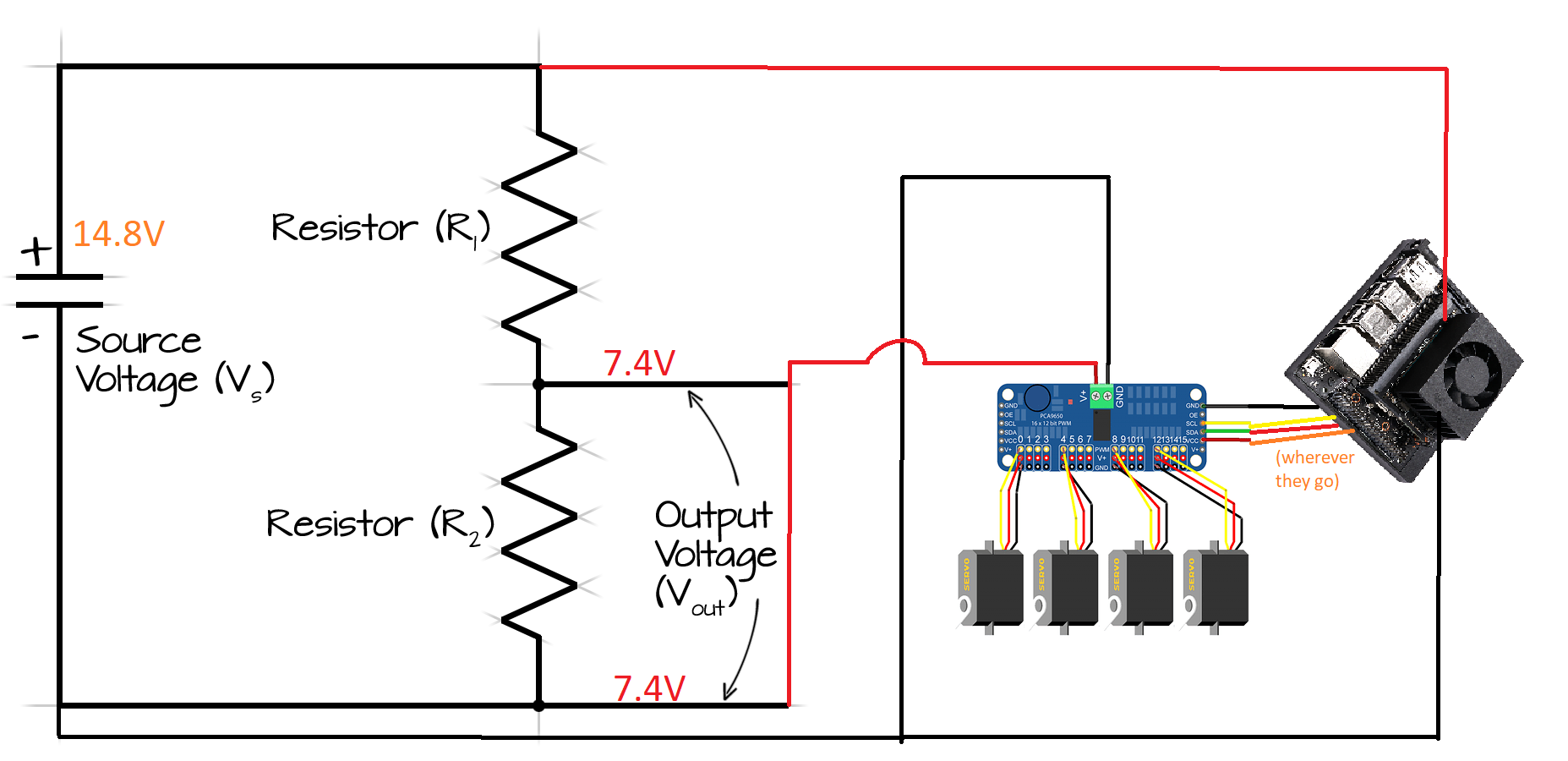I'm wondering if there's a more straightforward solution than using a step-down converter for my robot. The robot is mobile, so it needs to run on rechargeable batteries (Li-po).
I'm using a Jetson Xavier NX as controller, which accepts 9-20 V input, and it's got 4 x 7.4 V servos (6-8.4 V range), and some other power-hungry peripherals, but they run off the 5 V that the Jetson gives out.
I've googled voltage divider, and used a 'voltage divider calculator'. It looks like I literally just use any two of the same resistors. Surely some voltage is dropped across the resistors? If I can still get >6 V from the divide, the servos will run.
It's also more complicated, because I use a PCA9685 (16 x PWM outputs) to control the servos, so all of the servos are on the same power lines.
Can someone wiser than me look at my drawing, and tell me if this would work? If it would, what resistors could I use to get >6 V?

